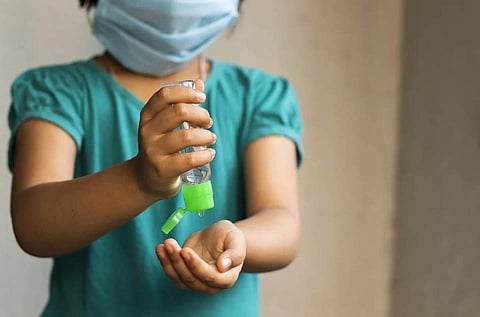

Researchers have found that loud speech has the capability of emitting small respiratory droplets that stay in the air for a minimum of eight minutes.
The new study reported in The Washington Post was published in a peer-reviewed journal of National Academy of Sciences. The experiment explains the reason behind the coronavirus infections spreading in nursing homes, conferences, households, and other places. The research was conducted by the scientists of the University of Pennsylvania and the National Institute of Diabetes, Digestive, and Kidney Diseases.
The findings are based on a laser light-based study that examined a number of respiratory droplets that are emitted through human speech.
"Highly sensitive laser light scattering observations have revealed that loud speech can emit thousands of oral fluid droplets per second," The Washington Post quoted the study.
Experts have studied the case of coronavirus transmission in a call centre in South Korea and in a crowded Chinese restaurant. These cases have led to suspicion that the highly contagious virus can spread through aerosol droplets.
The particular study did not involve the research based on coronavirus specifically. It rather studied how people generate respiratory droplets while speaking.
The experiment only focused on smaller droplets that have the capability of lingering for a longer time in the air.
The authors of the study have also concluded that louder speech leads to the production of more droplets.
The research paper suggests that speaking loudly for a minute generates at least 1000 droplet nuclei containing virion for more than eight minutes.
This direct visualization demonstrates how normal speech generates airborne droplets that can remain suspended for tens of minutes or longer and are eminently capable of transmitting disease in confined spaces," The Washington Post quoted the authors.
"This study is the most accurate measure of the size, number, and frequency of droplets that leave the mouth during a normal conversation and shower any listeners within range," The Washington Post quoted a virologist at Texas A&M University-Texarkana, Benjamin Neuman as saying.
"This study doesn't directly test whether the virus can be transmitted by talking, but it builds a strong circumstantial case that droplets produced in a normal close conversation would be large enough and frequent enough to create a high risk of spreading SARS-CoV-2 or any other respiratory virus between people who are not wearing face masks," Neuman added.
